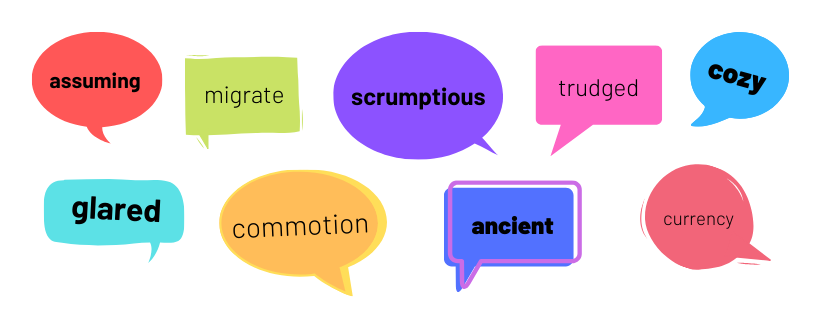You probably haven’t marked your calendar for this, but November 20th is Absurdity Day. When we saw that we immediately thought of oral vocabulary and opportunities to build it with students of every age.
Let’s clear one thing up right off the bat - when we say vocabulary, we’re not talking about your science or social studies bold-faced words and we’re really not talking about your spelling list.
Here’s a quick vocabulary clinic:
The Four Kinds of Vocabulary
- Listening Vocabulary - Words children understand when they hear them
- Speaking Vocabulary - Words children use when they speak
- Reading Vocabulary - Words children recognize in print
- Writing Vocabulary - Words children use when they write
Three Tiers of Listening & Speaking Vocabulary
- Tier One – words that require no explanation, generic; words children are innately familiar with, obvious, basic; examples include: little, run, smile, boy
- Tier Two – words that have a high frequency in a variety of contexts – not sight words! – useful throughout a student’s print and conversation experiences; examples include: mention, comment
- Tier Three – words that have a low rate of occurrence in everyday texts and situations, topic specific, jargon; examples include: peninsula, metamorphic
(We’ll focus on the listening and speaking/tier two component in the rest of this post.)
Now if you are groaning (hey, that’s a great word!) about trying to teach something else or lamenting (there’s another one!) because you teach children who can’t read those words, we’ve got some GOOD NEWS: Building oral vocabulary in students is not dependent upon reading ability at all. Even a three-year old can use the word frustrated properly when he/she speaks without being able to read it. It all comes down to the adults in that child’s life and how we talk to them. And, this sophisticated talk has implications for years to come. When that child can finally read a word that has been used over and over in conversation, they’ll already know what it means.
But wait, there’s more GOOD NEWS below!
Vocabulary knowledge is a stronger predictor of reading comprehension than most variables, even cognitive ability. (GOOD NEWS: you don’t have to be Einstein to have a great vocabulary.)
Quality literary and informational texts should be a primary source of vocabulary introduction, instruction, and expansion. (GOOD NEWS: you read to and share texts with your students already, right? You’re part way there.)
The broader the range of texts we share with students, the broader their vocabularies will be, so choose texts that represent different eras, cultures, perspectives, regions, etc. to get the biggest bang for your instructional buck. (GOOD NEWS: That means you can and should be reading great books to and with students across content areas; vocabulary instruction isn’t just a literacy block thing.)
We hope that by now, you’re at least considering this oral language thing a little more seriously than you were two minutes ago. And now that you’re interested, let’s get them interested. Have you ever used a “big word” in your classroom when speaking to students? Did anyone ever stop you and ask you what it meant? They are curious. Use it to your advantage.
Besides being purposeful in the words you use in everyday conversations with kids, your next step is to start locating high-quality books that relate to units and topics you teach and begin sharing them (and the splendid words they contain) with students. Try to avoid the temptation of introducing a whole bunch of words, before you begin reading a book. They will forget. Instead, stop reading when you hit one of those spectacular (yup, there’s another one!) words and explain it on-the-spot. You’ll not only support their comprehension but you’ll also start building word awareness and excitement.
To give you a boost we’ve created a short list here to get you started. If you want to learn more about building oral language in your students the most inspiring book on this topic in our opinion is Bringing Words to Life by Isabel Beck, et al. You can watch an interview with her here!
_0.png)




